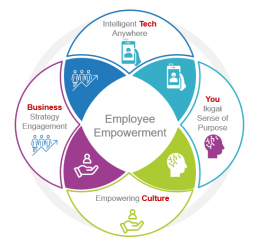I have a great story to tell you.
I want to share with you the transformation journey of a leading company that is now the envy of its industry peers.
This company, which for confidentiality purposes I will call “Myrs”, not only digitally transformed the way it operates but also, and most importantly, broke away from an enterprise culture anchored in the past that was threatening its survival.
A Company Is Only as Good as its People
Myrs was underperforming for some years. A combination of short-sighted investments and complacency resulted in bad losses against its competitors. Morale was low and its best talent had left to seek greener pastures elsewhere.
Myrs had to act quickly. It had a simple choice: adapt or die. With no time to waste, it set out a five-year growth strategy that rested on its most precious and adaptable asset — its people.
Besides well-targeted digital investments, Myrs transformed its organisation and revitalised its culture to win back its top talent. It paid off. Its journey was painful and it encountered a lot of resistance internally, but its strategy had C-suite buy-in and a clear direction.
The company prioritised three initiatives in its transformation journey: empowerment, innovation and connectedness.
Empowerment
Equipping people with the right technology delivered quick results. However, other crucial elements were factored in to empower people:
- Alignment to business strategy, for engagement, deep understanding of the company’s direction and crucially for trust in its leaders.
- A culture of empowerment based on trust, a coaching management model and lifelong learning (e.g., levelling up digital dexterity and developing an entrepreneurial mindset).
- A good understanding of individuals and their “ikigai”, enhancing work and making it more fulfilling for them.
Innovation, Creativity
The company’s digital transformation strategy was ambitious and delivered operational efficiencies across the organisation. However, Myrs had to urgently find new sources of business revenue to stay ahead of the game.
New KPIs were introduced that rewarded innovation, creativity and a growth mindset. Automation software freed up people from mundane tasks, while ideation platforms and low code/no code tools enabled everyone to be part of the imagination of the company.
In no time, the first launchpads were a success.
Connectedness
The social fabric of the organisation needed urgent repair after years of poor morale and disconnection. While the company had invested in digital engagement platforms and in redesigning its offices, something more intrinsic was still missing — purpose.
The C-suite revisited its mission and, without deviating from its raison d’être, Myrs incorporated ethical and sustainability goals and formalised an ESG programme after consultation with its people.
Myrs is now a top rated employer.
This transformation journey has not yet reached an end, however. While its ethos and mission remain unchanged, the organisation is constantly adapting for resilience and new growth opportunities. Unlike most of its industry peers, Myrs was practically unaffected by the COVID-19 pandemic.
Myrs is a good example of a company that feared for its own existence but responded with an effective strategy that placed its people front and centre.
Your company can be Myrs.
Do you want to hear more stories like this? Join us at the IDC Future of Work Summit and Future of Work European Conferences in 2022.
Contact us to share your own stories.


